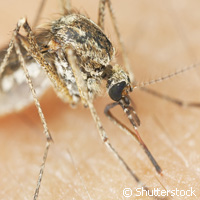Mosquito nets fail to prevent against kala azar disease
Long-lasting insecticidal nets were an important breakthrough in malaria prevention. However, they do not offer protection against all diseases transmitted by insect bites, according to a new international study. This research is an outcome of the KALANET ('Efficacy, acceptability and cost-effectiveness of long lasting insecticidal nets in the prevention of Kala-azar') project, which clinched EUR 2.11 million under 'International cooperation activities' (INCO) Activity of the EU's Sixth Framework Programme (FP6). The study was presented in the British Medical Journal. Researchers led by Professor Marleen Boelaert from the Institute of Tropical Medicine Antwerp in Belgium said their studies showed that mosquito nets failed to protect people in India and Nepal against the transmission of kala azar disease. This disease, also known as visceral leishmaniasis, affects half a million people each year and is caused by the Leshmania parasite, which is transmitted by sand flies. The parasite destroys the infected person's blood cells, leading to an enlarged spleen, inflammation and progressive wasting. If left untreated, the outcome is fatal. Until now, sand flies in India and Nepal have been controlled by indoor spraying of an insecticide such as DDT (dichlorodiphenyltrichloroethane). However, spraying, when it happens, is local and irregular, which means that enough sand flies and prey remain to continue the disease. Some families use mosquito nets, but these are not treated with long-lasting insecticides. To try to stop the spread of the disease, the researchers launched a large-scale campaign that involved providing everyone in a region with a mosquito net treated with insecticide that would remain active for several years. Scientists from the Institute of Tropical Medicine Antwerp and colleagues from India, Nepal, Switzerland and the UK agreed that this approach should work given that it had yielded positive results in Sudan - though they noted that the disease there was transmitted by a different sand fly. Moreover, in Iran and Syria, the treated nets had helped against cutaneous leishmaniasis, caused by other species of the genus Leishmania. The researchers added that the sand fly transmitting the disease in India often bites indoors and mostly at night, and so sleeping under a net made logical sense. But the study proved that these assumptions were misplaced. After following 20,000 people in 26 hamlets with a high incidence of visceral leishmaniasis in India and Nepal over a 2-year period, the scientists concluded that the use of nets did not have a significant effect on the number of cases of leishmaniasis. They had divided the hamlets into pairs, which resembled each other as much as possible, and then tossed a coin to decide which hamlet continued as usual, and which would receive treated nets on top of the status quo. During the period of the study, about half the villages were sprayed under the routine national control programme. In the hamlets with extra mosquito nets the sand flies indoor were reduced by 25%, but the number of infections was not significantly lower than in the control hamlets, nor was the number of cases of leishmaniasis. Indeed, the disease risk dropped by just 1%. However, the research team noted that in the campaign-villages 90% of inhabitants slept under their nets for more than 80% of the nights, while in the control hamlets only 30% of people slept regularly under an untreated net. Furthermore, the number of malaria cases dropped significantly in the villages with the extra nets. The team concluded that these results were due to the fact that sand flies bite more often outdoors than was previously assumed, where nets are not readily useable.For more information, please visit: Institute of Tropical Medicine Antwerp:http://www.itg.be/itg/generalsite/Default.aspx?WPID=513&L=EBritish Medical Journal:http://www.bmj.com/
Countries
Belgium, Switzerland, India, Nepal, United Kingdom



